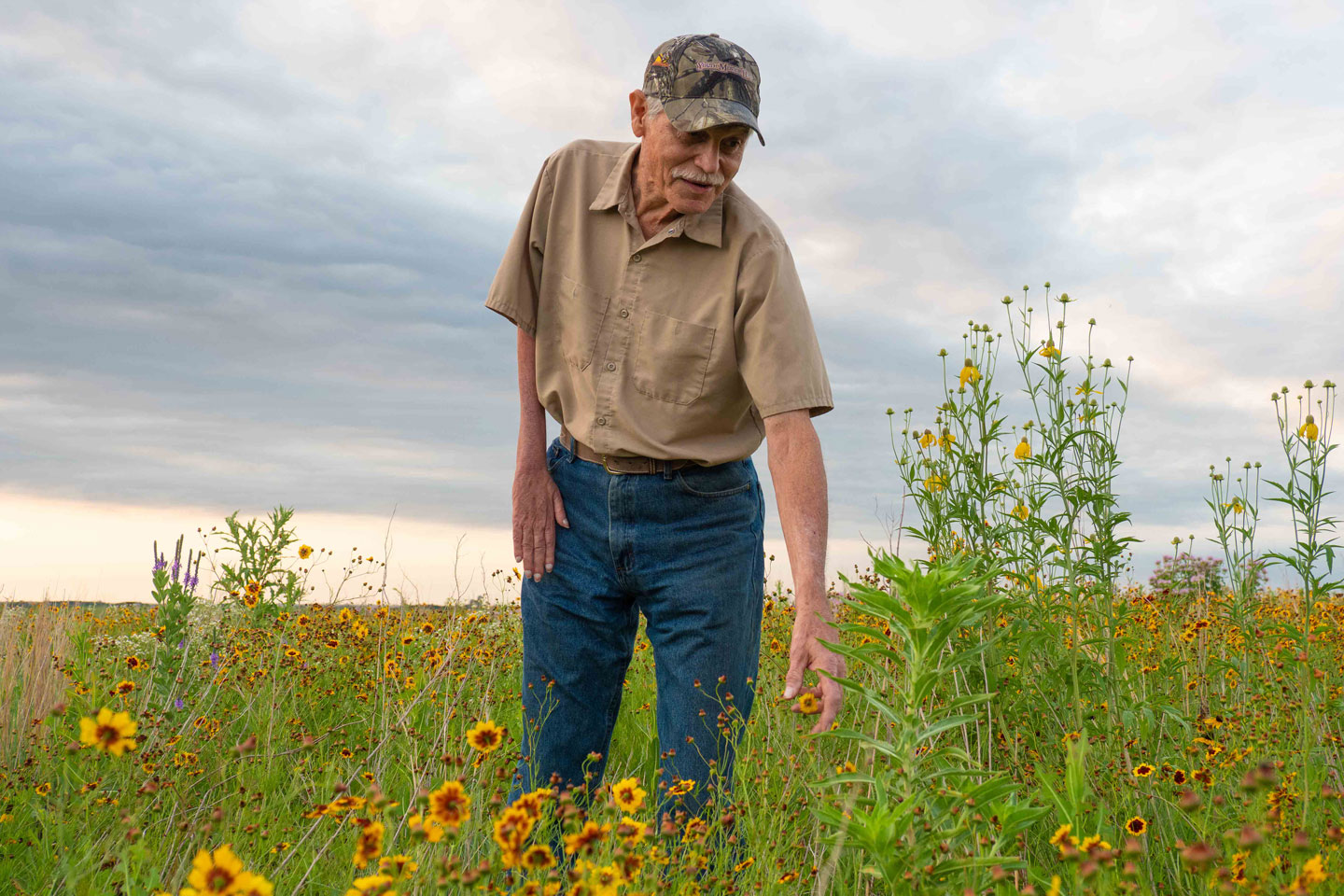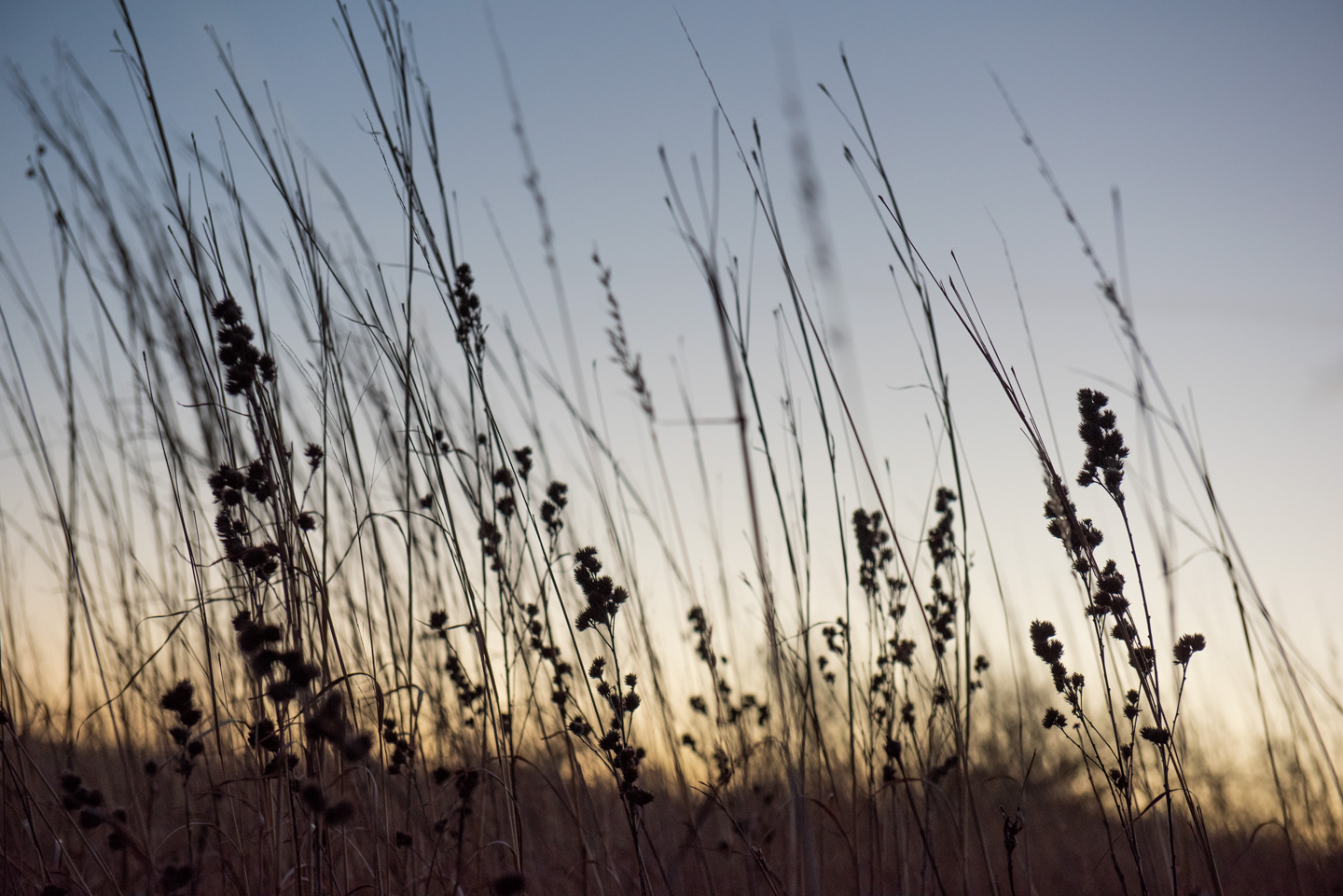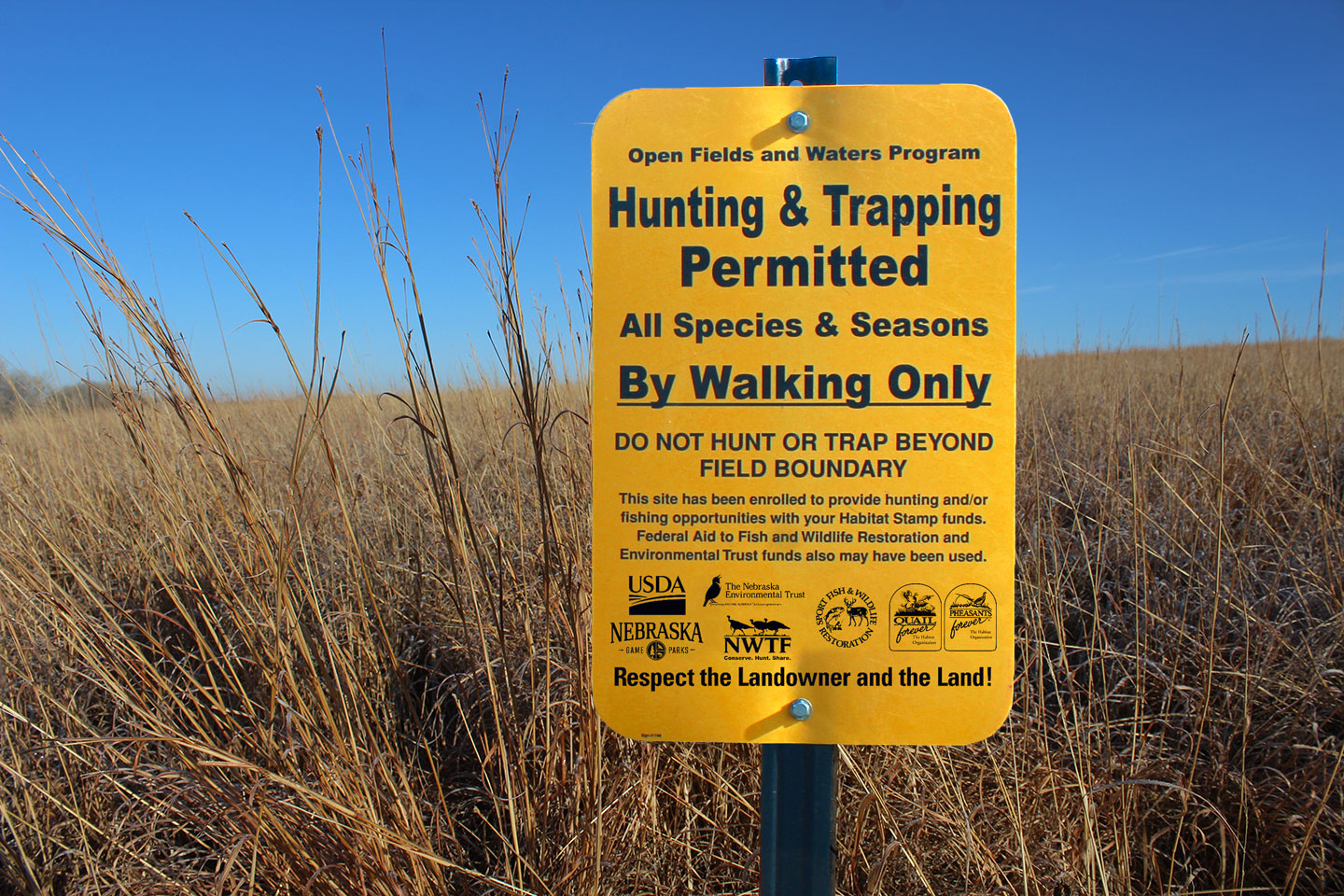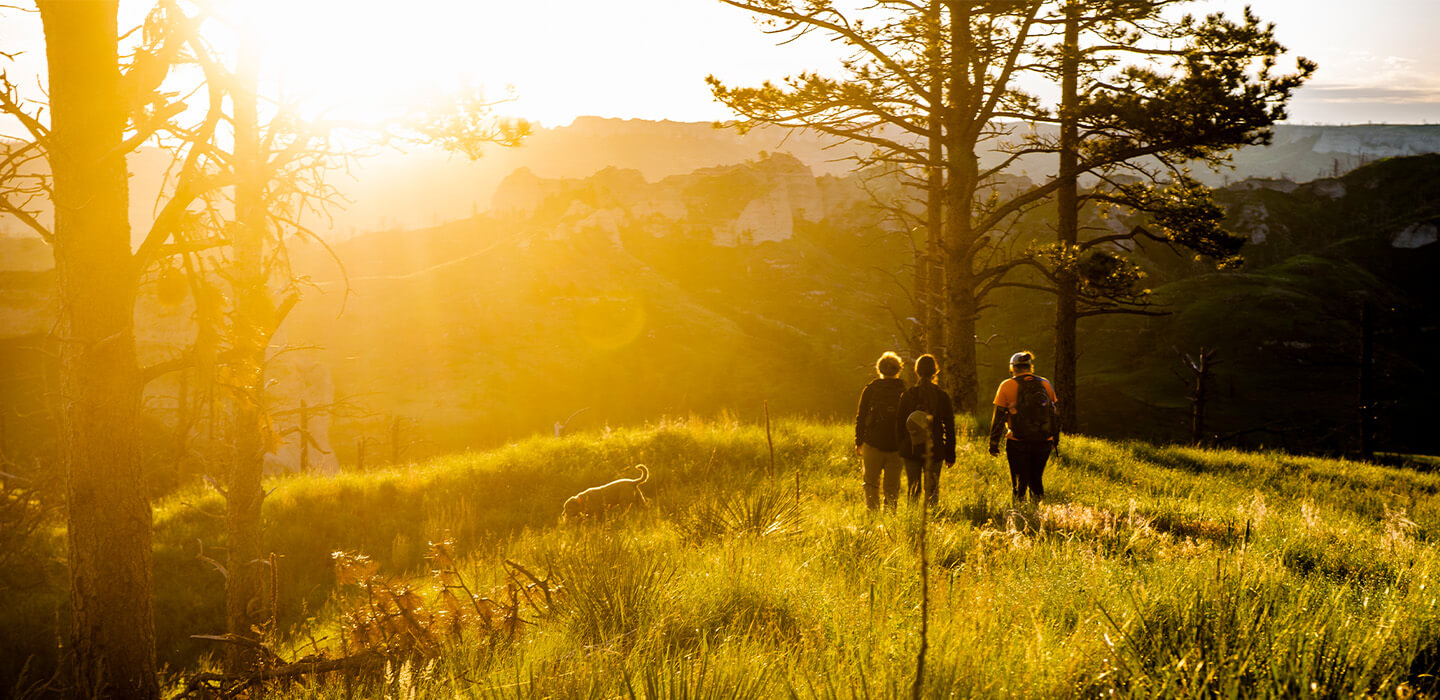Emergency Haying & Grazing
Landowners facing drought hardships can harvest supplemental forage for their livestock; this can affect cover on sites open to public access.
Frequently asked questions
For parts of Nebraska that experience drought or near drought conditions, hunters may have questions regarding how this could impact hunting opportunities this fall/winter. Drought can negatively affect habitat conditions and wildlife populations, but this greatly depends on its timing and severity. For example, habitat and weather conditions were relatively favorable throughout much of the state during this year’s upland bird nesting and brooding seasons, despite current drought conditions in portions of the state.
Hunters should be aware that “Emergency Haying and Grazing” of Conservation Reserve Program lands has been authorized in portions of Nebraska for 2024 and will likely impact cover on some sites open to public hunting access through the Open Fields and Waters Program.
The USDA-Farm Service Agency administers the CRP program and allows participating landowners facing drought hardships to harvest supplemental forage for their livestock. The majority of counties in Nebraska will allow only 50% of the forage in a field to be utilized, but that varies by county.
Hunters are reminded to keep the following in mind:
- For many landowners, having the flexibility to hay or graze during drought years is one of the main reasons they choose to participate in the CRP program.
- Haying/grazing takes place each year on some CRP fields and is often necessary to a) complete “habitat upgrades” required under a CRP contract, and b) increase the effectiveness of certain management practices (e.g., haying before applying chemical to control invasive grasses like smooth brome).
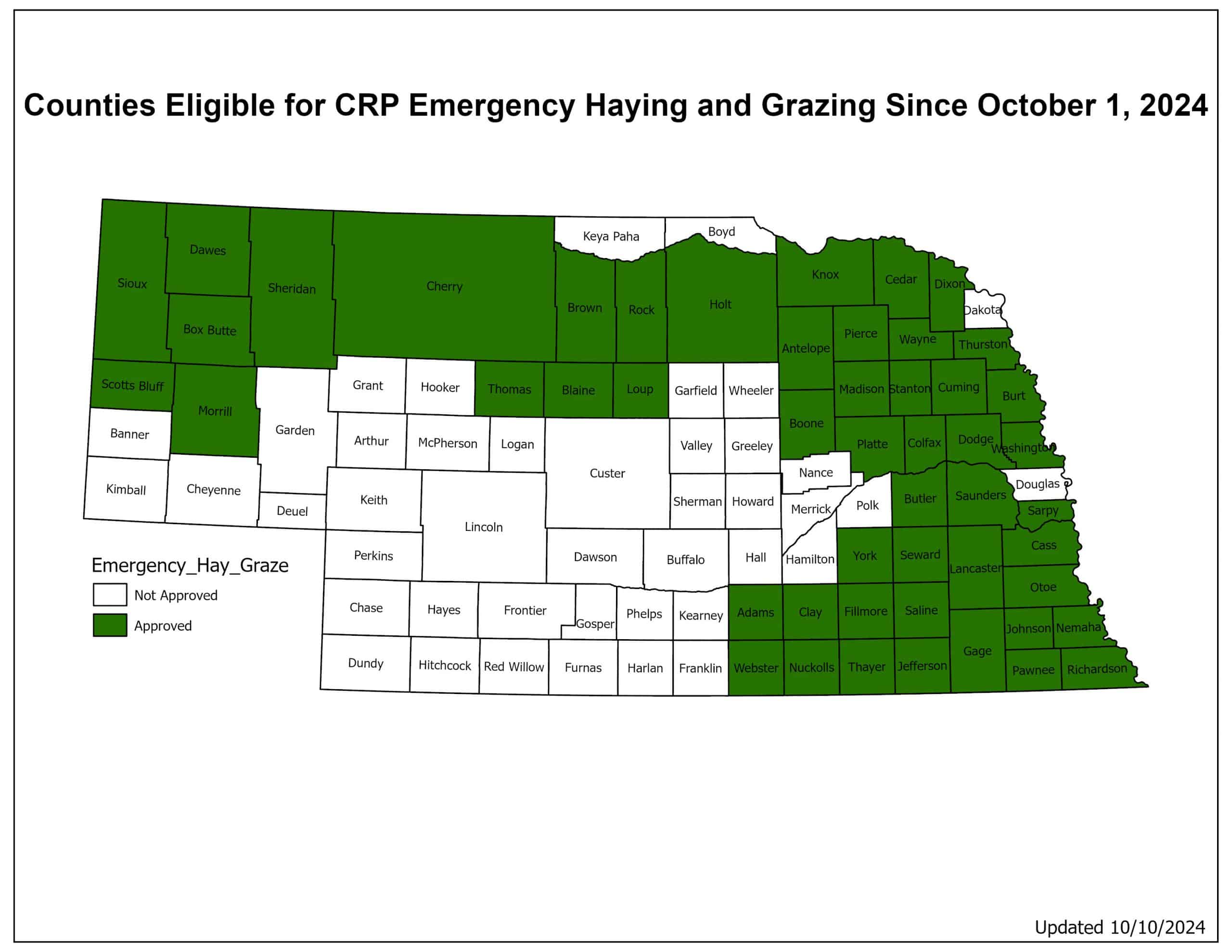
This will likely reduce cover in some CRP fields within these counties. Haying and grazing of CRP lands typically occurs between July 15 and Sept. 1 each year, but could extend to Dec. 31. Consequently, additional CRP fields may be affected as the hunting season progresses.
Learn more about current conditions through the Farm Service Agency and the U.S. Drought Monitor.
Due to deadlines associated with printing the Public Access Atlas, the primary OFW signup period is from April to mid-June each year. Knowing which CRP fields will be hayed or grazed in a given year is unknown at that time, as these activities generally take place later in the summer/fall. Pre-season scouting will increase hunting success but hunters are reminded that OFW sites impacted by emergency haying and grazing will often still provide hunt-able cover on portions of the site.
Game and Parks biologists inspect each OFW site annually and make adjustments to annual payments if the cover has been negatively impacted. Landowners typically do not receive any payment on CRP acres that are hayed or grazed. Landowners generally receive lower payment rates (typically $1 to $6 per acre) on rangeland and other “working lands” that are enrolled in OFW.
Yes, hunting is allowed on OFW sites (as well as on state/federal lands) where cattle are present, unless otherwise posted. In some cases, properties enrolled in OFW are part of working ranches and grazing may overlap with hunting seasons. Private landowners retain the right to graze their land, but if cover has been negatively impacted their payments may be reduced.
Cattle can be unpredictable and hunters are encouraged to use caution and common sense if hunting a site where cattle are present:
- Do not leave gates open or unattended; do not stretch fences
- Do not harass or shoot towards livestock
- Cattle respond in different ways – give them space and avoid hunting near them if your dog does not mind well.
- Avoid the site if the landowner/tenant is actively working with cattle on a site.

